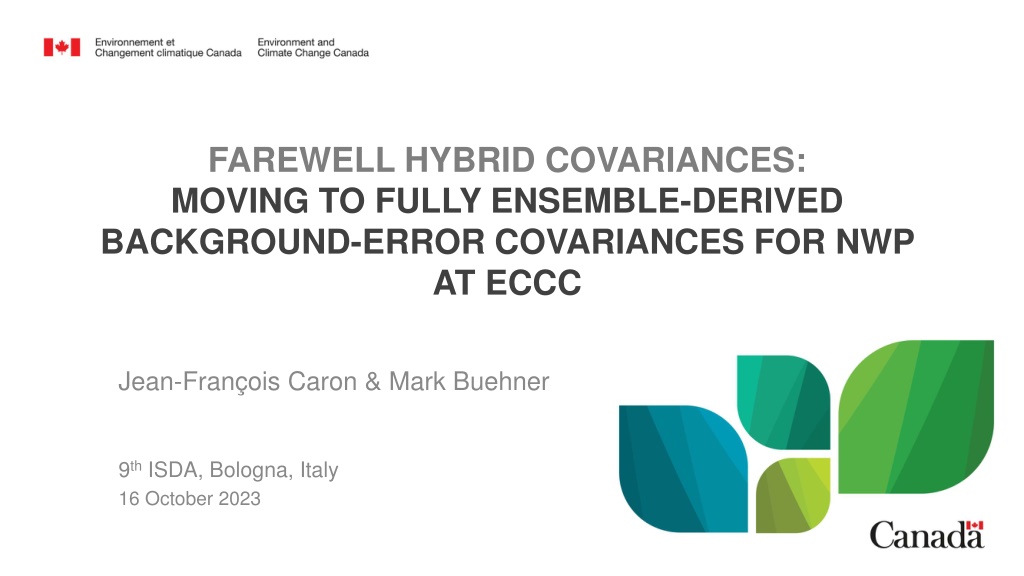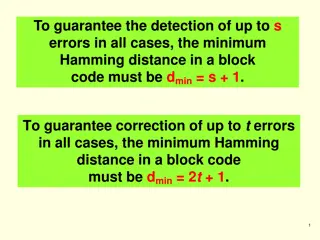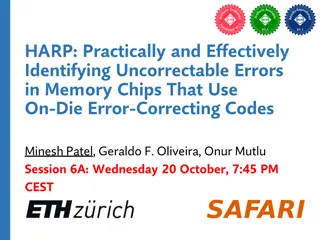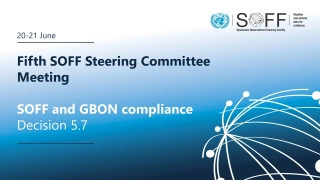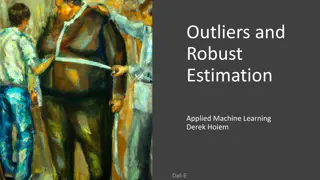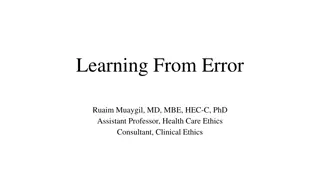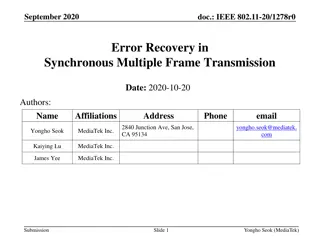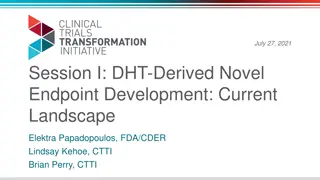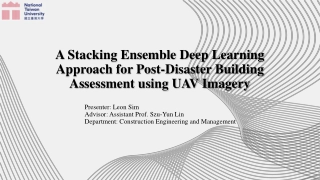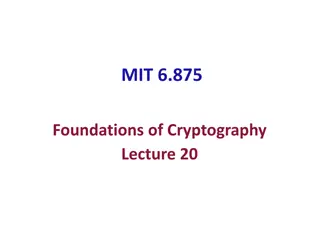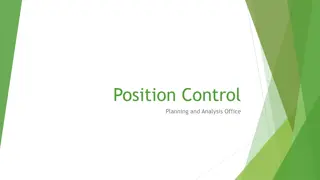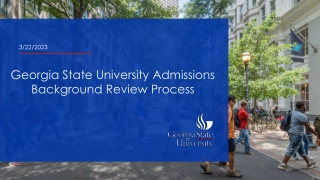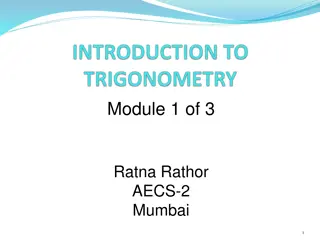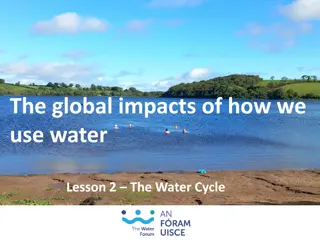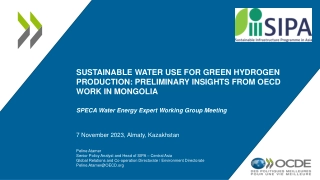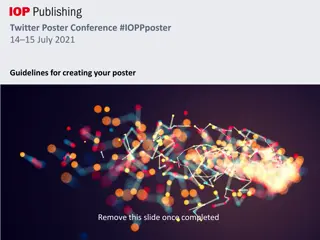Moving Towards Fully Ensemble-Derived Background-Error Covariances for NWP at ECCC
The transition from hybrid covariances to fully ensemble-derived background-error covariances for Numerical Weather Prediction (NWP) at Environment and Climate Change Canada (ECCC) is explored in this paper. It discusses the evolution of covariance formulations, the use of scale-dependent localization, EnVar with B1/2 preconditioning, SDL configuration, and experimental results against the GDPS 15-km control cycle. The study highlights improvements in forecast performance and quality indices through these advanced techniques and methodologies.
Download Presentation

Please find below an Image/Link to download the presentation.
The content on the website is provided AS IS for your information and personal use only. It may not be sold, licensed, or shared on other websites without obtaining consent from the author. Download presentation by click this link. If you encounter any issues during the download, it is possible that the publisher has removed the file from their server.
E N D
Presentation Transcript
FAREWELL HYBRID COVARIANCES: MOVING TO FULLY ENSEMBLE-DERIVED BACKGROUND-ERROR COVARIANCES FOR NWP AT ECCC Jean-Fran ois Caron & Mark Buehner 9th ISDA, Bologna, Italy 16 October 2023
INTRODUCTION Since the implementation of 4DEnVar at ECCC in 2014, the formulation uses hybrid covariances, that is a blend of flow-dependent and homogeneous and isotropic background-error covariances. B = ensBens+ nmcBnmc B-matrix weights evolution over time in our global NWP deterministic system ens 0.5 0.75 nmc 0.5 0.375 GDPS 2014 2018 SDL introduction in Bens as described in Caron and Buehner (2022, WAF) 0.25 (< 20 hPa) 0 (> 60 hPa) 0 Scale-dependent localization (SDL) is central in this revolution 2021 1 2024 1
ENVAR WITH B1/2 PRECONDITIONING Current (one-size-fits-all) Approach Analysis increment computed from control vector (B1/2 preconditioning) using: ( k ) = / 1 2 x e L k: member index k k Scale-dependent Approach (as in Buehner and Shlyaeva, 2015, Tellus) Varying amounts of smoothing applied to same set of amplitudes for a given member ( ) k where ek,j is scale j of normalized member k perturbation Shown to improved forecast performances in a 3DEnVar context in Caron and Buehner (2018, MWR) and Caron et al. (2019, MWR) k: member index j: scale index = / 1 2 x e L , k j j k j
SDL CONFIGURATION Filter response functions for decomposing with respect to 3 horizontal scale ranges 10000 km 2000 km 500 km Horizontal localization radius (km) 2021 1000 2400 3300 2024 1000 2400 3800 Small Medium Large Large scale Medium scale Small scale
EXPERIMENTS & SCORES 1.5 months against the GDPS 15-km control cycle (OPS; no SDL 0.75/0.375) 4DEnVar Summer 2019 Winter 2020 ens nmc SDL HN TR HS HN TR HS 0.75 0.375 Yes No 1 0 Yes No 1 0.25 Yes No 1.25 0 Yes
EXPERIMENTS & SCORES 1.5 months against the GDPS 15-km control cycle (OPS; no SDL 0.75/0.375) 4DEnVar Summer 2019 Winter 2020 ens nmc SDL HN TR HS HN TR HS 0.75 0.375 Yes +0.08 +0.64 +0.44 +0.02 +0.19 -0.19 No -0.88 +0.85 +0.83 -0.06 +0.33 -0.87 1 0 +0.69 Yes +1.29 +0.86 +1.11 +0.90 +0.10 No +0.25 +0.50 +0.43 -0.02 +0.22 -0.47 1 0.25 Yes +0.87 +0.63 +0.32 +0.49 -0.66 +0.79 No -0.58 +0.46 +0.28 +0.27 +0.33 -0.23 1.25 0 Yes +1.23 +1.04 +0.71 -0.27 +0.86 +1.06 Changes in total forecast quality index (in %) with respect to OPS and computed using ECMWF analyses
SCORECARD OVER 2.5 MONTHS Summer 2019 Winter 2020 100% Bens& SDL vs OPS
LATITUDINAL CROSS-SECTIONS Temperature STDE differences for 24h forecasts Winter 2020 1.5 months 100% Bens& SDL vs OPS 100% Bens& SDL + 25% Bhionly < 20 hPa vs OPS 100% Bens& SDL + 25% Bhi vs OPS
REDUCE TAPERING NEAR THE LID To avoid triggering some instabilities near the model lid, we taper the variances of both Bnmc and Bens Tapering of Bnmc is done in the matrix computation step while the tapering of Bens done by adjusting ens IC-3 (2021) IC-4 (2024) ens nmc After the 2021 implementation of SDL, it was found that variances tapering of Bens was too severe and explained why deteriorations were found in the upper stratosphere without a contribution from Bnmc
REDUCE TAPERING NEAR THE LID Temperature STDE differences for 24h forecasts Winter 2020 2.5 months 100% Benswith legacy tapering vs IC-3 100% Bens with reduce tapering vs IC-3
LEVERAGING ENSEMBLE IMPROVEMENTS OPS pre 2021 & newEns vs OPS pre 2021 & oldEns OPS since 2021 & newEns vs OPS since 2021 & oldEns Relying more on ensemble- derived covariances amplifies the positive impacts when the background ensemble generation strategy is improved Winter 2020
HYBRID-GAIN APPROACH IN EPS We revisited the hybrid-gain approach after introducing SDL and purely ensemble-derived covariances in the EnVar used in our global ensemble system. GEPS 2019 2021 ? ? ? ? ? ??,hyb = ??,LETKF + ? ?EnVar ??,LETKF 0.5 [0,1] ?= 1 : the analyses are centered on the EnVar analysis ?= 0 : no recentering takes places New optimal coefficients 0.5 < 50 hPa 0.75 > 100 hPa 2024 It is unclear why hybrid-gain has still a positive impact (especially in the stratosphere) given the limitations in the current LETKF: a) The LETKF algorithm treats radiances as local observations rather than integrated ones as in the EnVar b) The LETKF assimilates less radiances than the EnVar c) The absence of SDL in the LETKF
SUMMARY AND CONCLUSIONS Implementing the SDL formulation of Buehner and Shlyaeva (2015) in our 4DEnVar scheme eliminated any benefit from including static covariances All three NWP systems relying on 4DEnVar at ECCC (GDPS, GEPS and HRDPS) will be using fully ensemble-derived background-error covariances from 2024, bringing many benefits: Reduces the maintenance burden of our systems. Tuning and adapting Bnmc for system changes is/was not straightforward. Maximise the forecasts improvements when upgrading the ensemble system. Facilitates the extension of the analysis step to hydrometeors and other highly flow- dependent variables. However, SDL on its own is not sufficient to move away from hybrid-gain in our global EPS
EXTENSION OF SDL IN THE VERTICAL So far, we have only tested and implemented horizontal-scale-dependent horizontal localization. But vertical-scale-dependent vertical localization is possible and would lead to horizontal-vertical SDL. hLoc-small vLoc-large hLoc-medium vLoc-large hLoc-large vLoc-large Vertical scale Vertical scale hLoc-small vLoc-medium hLoc-medium vLoc-medium hLoc-large vLoc-medium hLoc-small vLoc hLoc-medium vLoc hLoc-large vLoc hLoc-small vLoc-small hLoc-medium vLoc-small hLoc-large vLoc-small Horizontal scale Horizontal scale
EXTENSION OF SDL IN THE VERTICAL Explored idea: Perform vertical scale decomposition using the eigen vectors of a correlation matrix
EXTENSION OF SDL IN THE VERTICAL Preliminary results where stratiform and convective events take place next to each other Bens No Loc Bens Std vLoc Bens vSDL vLoc vLoc: 0.5 / 2 / 4 ln(p) vLoc: 2 ln(p) 900 hPa T observation in a stratocumulus area Normalized temperature increments (correlation-like) resulting from various B matrices.
TIMINGS & COMPUTATIONAL COSTS Comparison of computational resources used on a CRAY XC-50 for the variational analysis program in the GDPS 4DEnVar configuration with and without the three wave bands SDL. x 2.25 The cost is simply defined as the product of the wall clock time and the number of cores used.
SCALE-DEPENDENT LOCALIZATION (SDL) Impact in single observation DA experiments Bens Std hLoc Bens No hLoc +1 +1 700 hPa T observation at the center of Hurricane Gonzalo (October 2014) 0 0 -1 -1 hLoc: 2800km Bens SDL hLoc Bnmc +1 +1 Normalized temperature increments (correlation- like) at 700 hPa resulting from various B matrices. 0 0 -1 -1 hLoc: 1500km / 4000km / 10000km
SCALE-DEPENDENT LOCALIZATION (SDL) Impact in single observation DA experiments Bens Std hLoc Bens No hLoc +1 +1 700 hPa T observation at the center of a High Pressure 0 0 -1 -1 hLoc: 2800km Bens SDL hLoc Bnmc +1 +1 Normalized temperature increments (correlation- like) at 700 hPa resulting from various B matrices. 0 0 -1 -1 hLoc: 1500km / 4000km / 10000km
